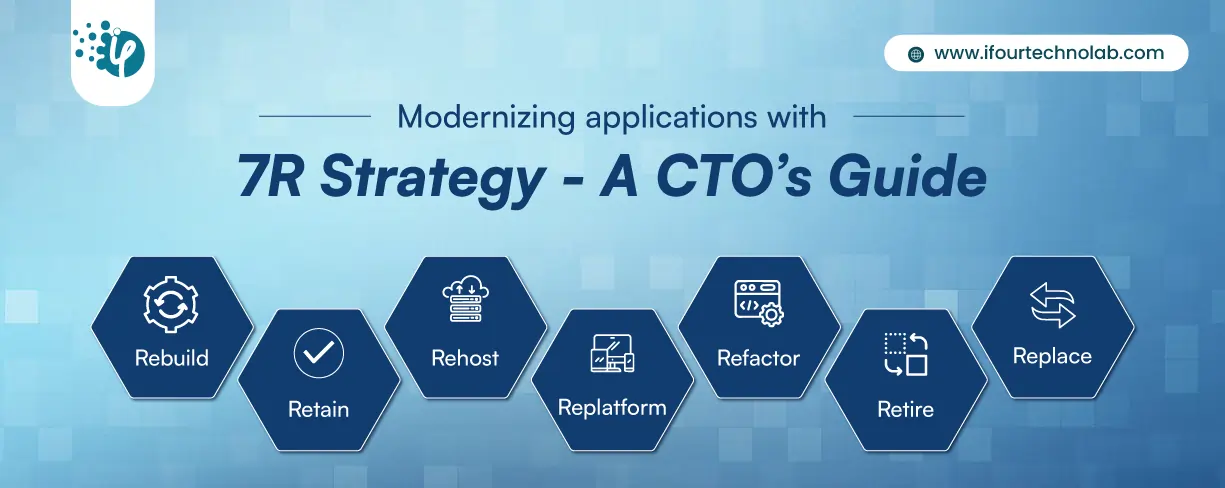Modernizing applications with the 7 R strategy – A CTO’s Guide
Think about the last time CTOs spent most of their time fixing old systems. Updates were slow, servers were expensive, and adding new features took time. Now, things have changed....
Listening is fun too.
Straighten your back and cherish with coffee - PLAY !

Java and .NET have established themselves as the major web development platforms. Not only do they remain significant and invaluable programming languages today, but also revealed how the new world of technology would evolve over the next two decades. Each one of them has its own strengths and weaknesses, and the choice of which one to use depends on the specific requirements of the project.
Java and .NET are both widely used technologies for custom software development Java, which is owned by Oracle, is a popular programming language for developing enterprise-level applications that are used by firms such as Google, Amazon, and Twitter. It is also extensively used for Android application development.
.NET, which is developed by Microsoft, is a framework for building Windows, desktop, and web applications. It is also used to build web services and web API. This framework is compatible with C#, C++, F#, and other object-oriented programming languages. The CLR (Common Language Runtime), which allows you to run compiled source code, is also included in the .NET platform.
Both Java and .NET are mature technologies with large developer communities and have a wide range of tools and libraries available to developers. They are considered industry standards and are leading the way in the software development world. They offer a wide range of functionalities and are supported by a vast community of developers. They are commonly used in big companies and are mostly used for enterprise-level projects.
The figure below depicts the popularity statistics of Java and Dot Net among developers in order to help you understand the importance of these two platforms in the technical industry.
Most popular languages
Java is intended to allow the development of portable, high-performance programs for the broadest variety of computer platforms conceivable, hence supporting the essential notions of broad accessibility and cross-platform interactivity. Let’s take a look at the comparison of .NET and Java for web development.
.NET and Java are both popular frameworks for software development, but there are some key differences between the two. The interesting difference between these two platforms is that Java is recognized for supporting various platforms, whereas .NET is known for supporting different languages.
The following are the key differences between Java and .NET that one should know.
One of the main differences is the language they are based on. .NET is primarily used with languages such as C# and Visual Basic, while Java is used with the Java programming language. Each language has its own set of features, and developers may prefer one over the other based on their personal preferences or the specific requirements of the project.
Another difference is the type of applications they are best suited for. .NET is often used for building Windows desktop and web applications, while Java is more commonly used for building cross-platform, enterprise-level applications. For example, if you are building an application that needs to run on Windows and have access to Microsoft's technologies like Office or Azure, .NET would be a better fit. On the other hand, if you need to build an application that can run on multiple platforms and has a big ecosystem with a lot of libraries, Java application development would be a better choice.
Another example would be the performance, Java is known to have better performance than .NET in certain scenarios, for example, when it comes to large-scale data processing, distributed systems, and high-performance computing. While, .NET has a built-in garbage collector which automatically manages memory, whereas Java uses a manual approach for memory management. This can result in better performance for certain types of applications, such as gaming or other real-time applications.
Additionally, .NET has a unified API for both Windows and Web development, whereas Java has a separate API for each platform. This can make development in .NET more streamlined and efficient, as developers can use the same set of tools and libraries for building both desktop and web applications.
In summary, both .NET and Java have their own strengths and weaknesses, and the choice of which one to use depends on the specific requirements of the project. It's important to consider factors such as the target platform, performance requirements, and the development team's expertise and preferences when making a decision.
You might be surprised to learn that .NET and Java can work together in custom software development. There are several ways to accomplish this, for example, using web services to communicate between the two platforms, using a Java Native Interface (JNI) to call .NET code from Java, and using a .NET interoperability library to call Java code from .NET. Additionally, tools such as IKVM can be used to convert Java code to .NET assemblies.
Web services can be used to communicate between Java and .NET platforms in the following way:
Step – 1: Create a web service on the Java platform using a framework such as Apache Axis or Spring. This web service should define the methods that will be available for the .NET platform to call.
Step – 2: Host the web service on a web server, such as Apache Tomcat. This will make the web service available over the network.
Step – 3:On the .NET side, use a tool such as wsdl.exe to generate a proxy class that can be used to communicate with the web service. This proxy class will have methods that correspond to the methods defined in the web service.
Step – 4:Use the proxy class in the .NET code to call the methods on the web service. This can be done using standard .NET web service client code.
Step – 5:The Java web service will receive the request and process it, then return the result back to the .NET client.
It is also worth mentioning that this interaction between Java and .NET can be done through RESTful web services as well.
Java Native Interface (JNI) is a way for Java code to call native code written in other languages, such as C or C++. To use JNI to call .NET code from Java, you would need to do the following:
There are several libraries that allow .NET code to call Java code, here is an example of how to use one such library:
IKVM is an open-source implementation of the Java Virtual Machine (JVM) that runs on the .NET Framework. It can be used to convert Java bytecode into .NET assemblies, allowing Java code to be executed on a .NET runtime. This can be done by using the ikvmc command line tool, which takes a Java class or JAR file as input and generates a corresponding .NET assembly or executable. The resulting assembly can then be used in a .NET application just like any other .NET assembly.
Here is an example of using ikvmc to convert a Java class file to a .NET assembly:
ikvmc -target:library MyJavaClass.class
This command will create a .NET assembly named MyJavaClass.dll in the current directory.
Similarly, to convert a JAR file to a .NET assembly, use the following command:
ikvmc -target:library MyJavaLibrary.jar
This command will create a .NET assembly named MyJavaLibrary.dll in the current directory.
DOT NET and Java have established themselves as key web development platforms by staying prominent and valuable programming languages in the current period. Both have some amazing and unmatched qualities that indicated the view of a new era over the next two decades.
These two platforms, like any other, have their own advantages and disadvantages, and which one to choose for software development is determined by the project's unique requirements. In this blog, we explored how. NET differs from Java in bespoke software development. We also learned how to use each of these platforms in project creation.

Think about the last time CTOs spent most of their time fixing old systems. Updates were slow, servers were expensive, and adding new features took time. Now, things have changed....

According to HackerOne, fixing a security issue after software is released can cost 30 times more than fixing it during development. Today, CTOs take a different approach. Shift...

A few years ago, companies built software first and thought about security later. Developers and security teams did not cooperate, and problems were fixed only after release. This activated DevSecOps vulnerabilities and many DevSecOps failures.